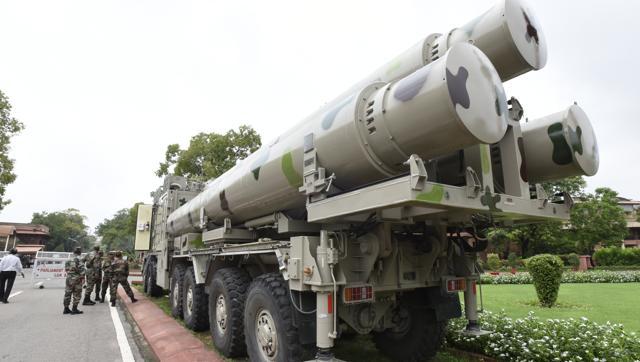Source: Hindustan Times

Weeks after the Indian government cleared the deployment of a special version of the BrahMos cruise missile in the northeast, China has warned that such a move would have “a negative influence” on stability along the border.
Earlier this month, the cabinet committee on security, which is chaired by Prime Minister Narendra Modi, cleared the raising of a new regiment to be equipped with an advanced version of the BrahMos developed for mountain warfare at a cost of more than Rs 4,300 crore.
The new regiment will be deployed in Arunachal Pradesh, which is claimed by China. There have been several standoffs between Indian and Chinese troops along the Line of Actual Control in recent years.
A commentary over the weekend in the PLA Daily, the official publication of People’s Liberation Army, said the deployment of the supersonic cruise missiles could lead to counter-measures by China.
“India deploying supersonic missiles on the border has exceeded its own needs for self-defense and poses a serious threat to China’s Tibet and Yunnan provinces,” the commentary said.
“Deploying BrahMos missiles is bound to increase competitiveness and confrontation in Sino-Indian relations and bring a negative influence to stability of the region,” it added.
The piece noted other steps taken by India to beef up its capabilities along the border with China, such as the deployment of UAVs and Su-30 combat jets, and claimed such moves were part of a policy of “counterbalance and confrontation”. The BrahMos missile “could increase suddenness and effectivity of attacks”, including “crushing blows on time-sensitive targets like missile launchers and solid targets like command centres”.
Referring to descriptions of the new version of the BrahMos in Indian media reports, including the missile’s “excellent dive attack capabilities”, the commentary said it “fits in the Sino-Indian border where it’s mostly mountain topography”.
The missile’s “penetration capabilities” poses a threat to China’s border regions, said the commentary by an expert from the PLA Navy’s engineering university.
However, it added that the BrahMos missile’s range of 290 km “cannot threaten China’s deep zones”.
The Indian Army has so far raised three regiments equipped with two earlier versions of the BrahMos, which was jointly developed by India and Russia and is named after the Brahmaputra and Moskva rivers. The missile has also been fitted on Indian warships.
The new regiment for the northeast will have some 100 missiles, five mobile autonomous launchers on heavy-duty trucks and a mobile command post.
